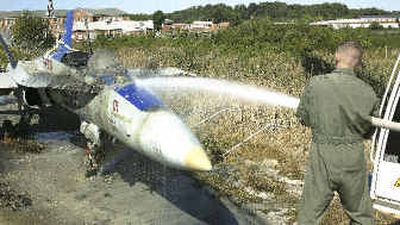Military confronts air crashes

WASHINGTON – Skimming low over hills in eastern Afghanistan, 11 Marines packed into an Army Black Hawk helicopter asked for an exciting flight, demonstrating for visiting dignitaries how troops are sped into battle.
Then a wheel chock rose off the floor and flew forward into the cockpit, jamming the controls. In the tumbling crash that followed, a crew chief in the doorway died. Everyone else was injured. The $6 million helicopter was destroyed.
The accident last summer was among the latest in a series of crashes blamed on recklessness, not enemy gunfire or faulty equipment, the Associated Press found.
“Top Gun”-style flying, personified by Tom Cruise as a brash Navy pilot in Hollywood’s 1986 film, presents the Pentagon with a dilemma: How to breed aggressive aviators in high-performance jets and helicopters capable of extraordinary maneuvers without endangering crews, passengers and aircraft.
The pilot in Afghanistan, Chief Warrant Officer 3 Darrin Raymond Rogers, 37, of Mililani, Hawaii, pleaded guilty last week to negligent homicide, reckless endangerment, property destruction and failure to obey orders.
Reckless accidents frustrate military commanders because these typically occur during training flights and are considered avoidable. Air Force crews are encouraged to announce, “Knock it off,” when a pilot begins to fly unsafely.
But serious criminal charges such as those against Rogers are unusual. Prosecuting pilots in public deeply divides military aviators, who more commonly face quiet administrative proceedings that include warnings and temporary grounding.
The Army is rewriting rules to specify which maneuvers are allowed and teaching pilots aggressive new aerial techniques that push helicopters closer to their engineering design limits.